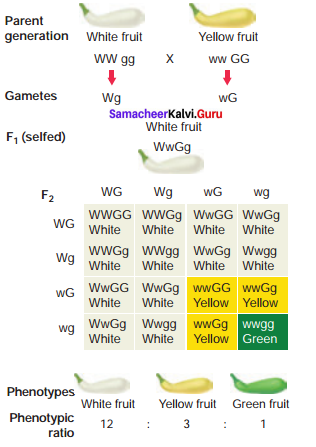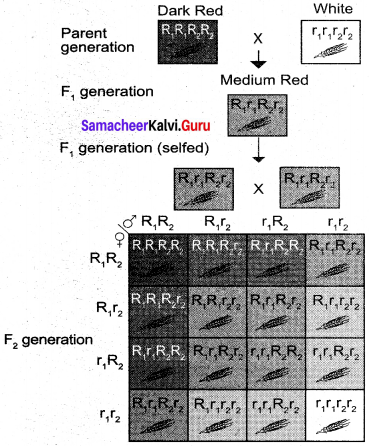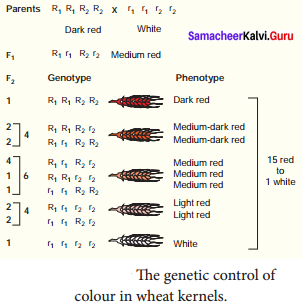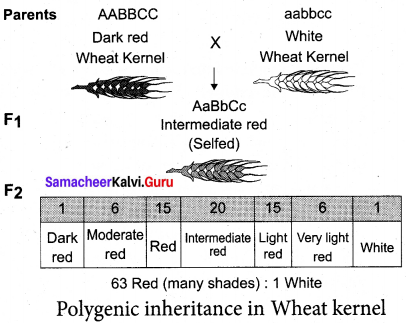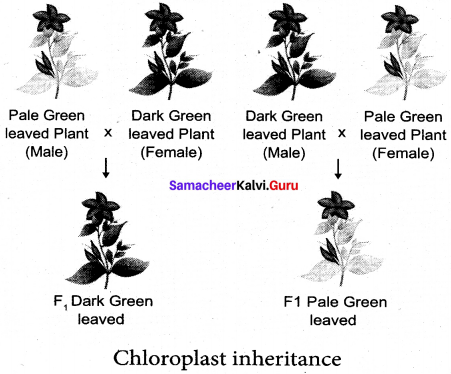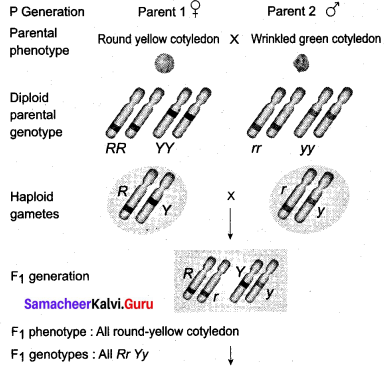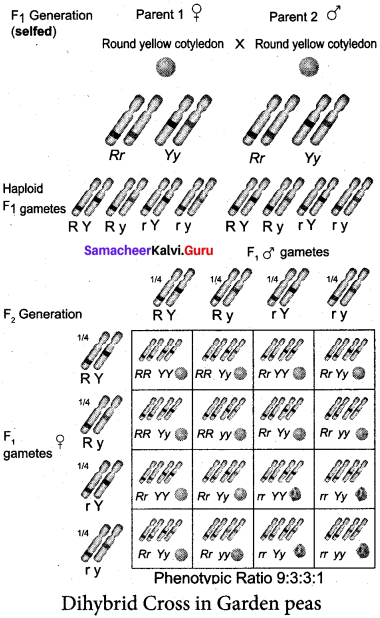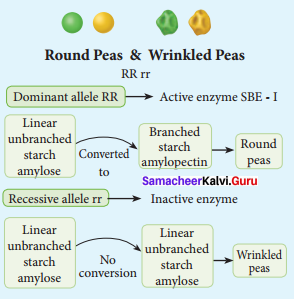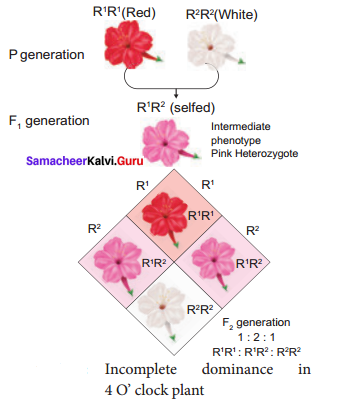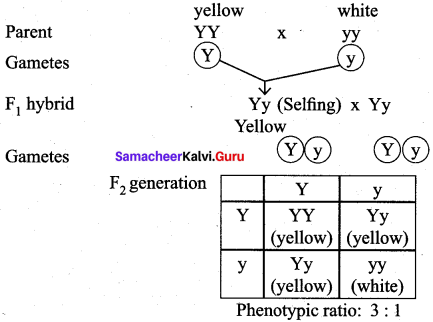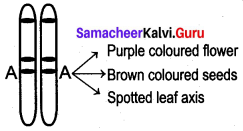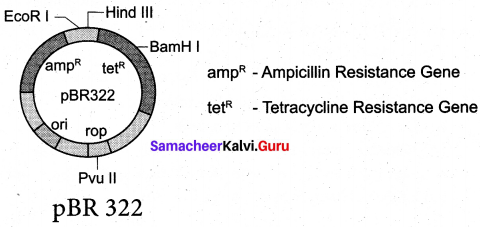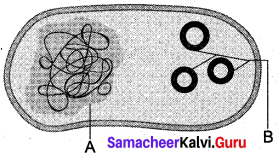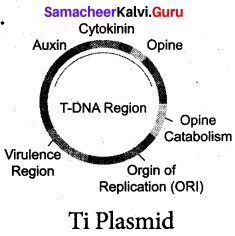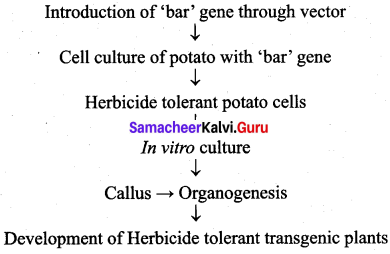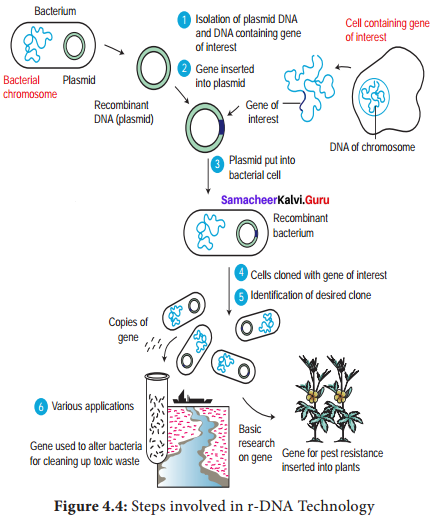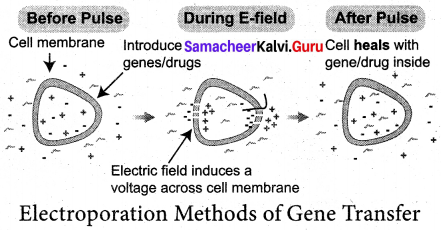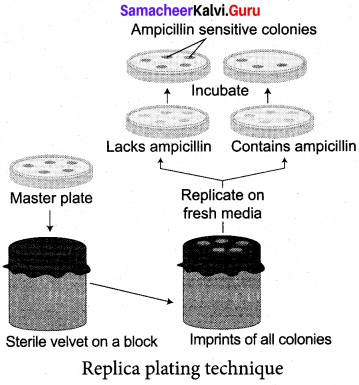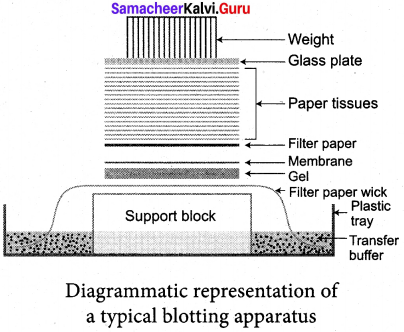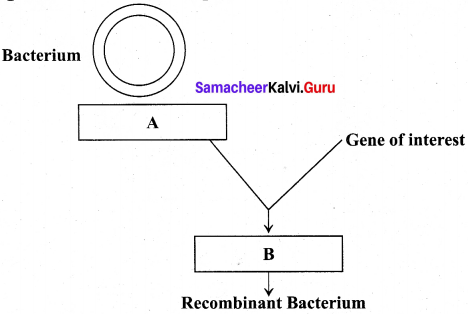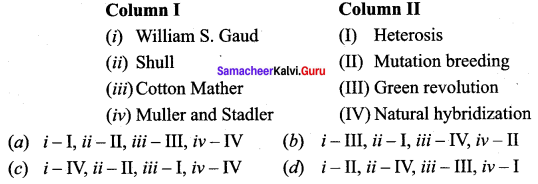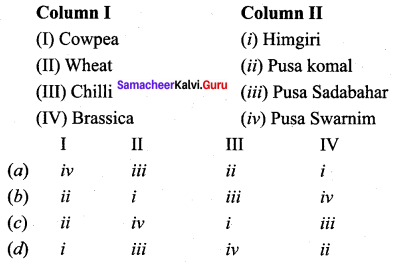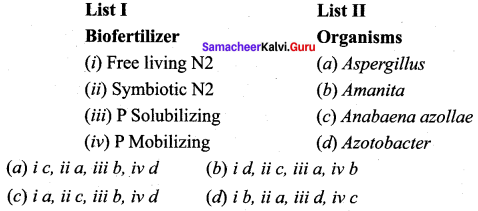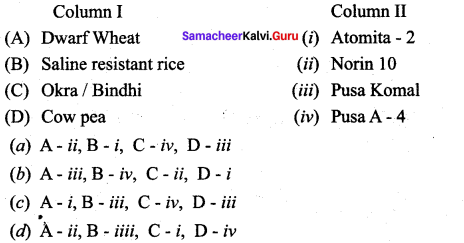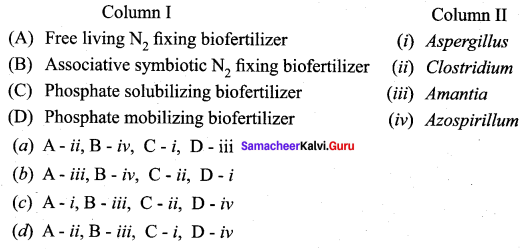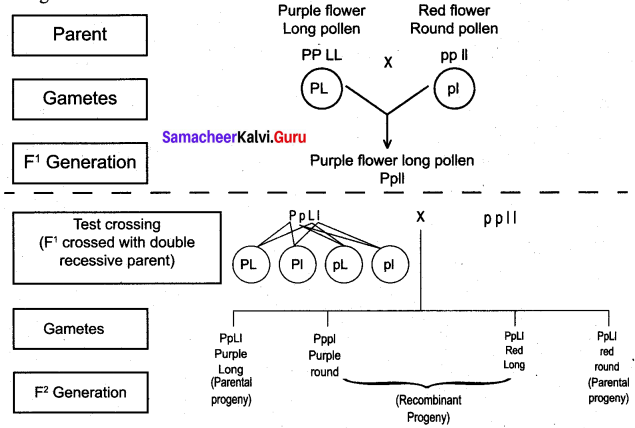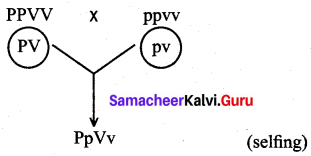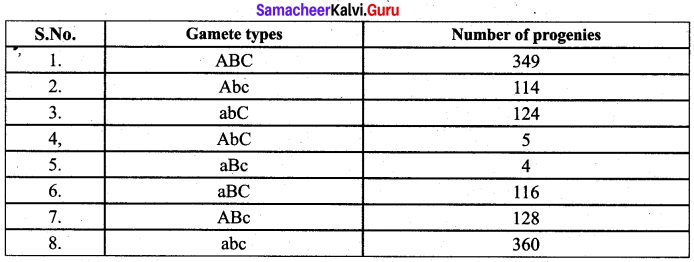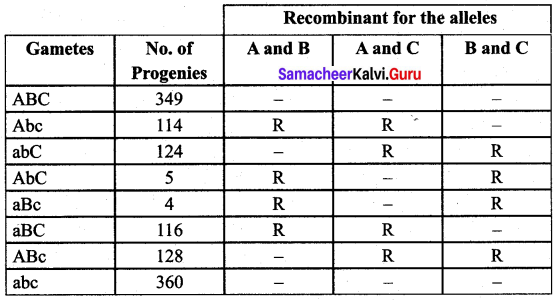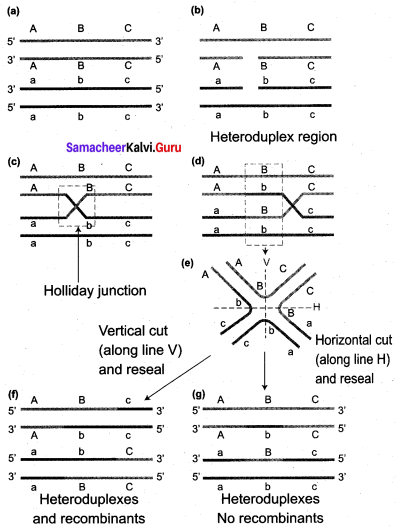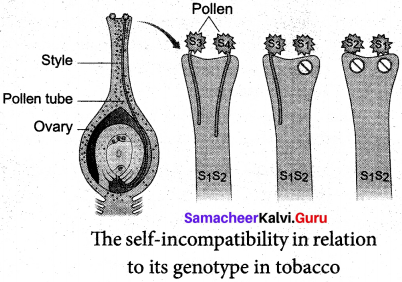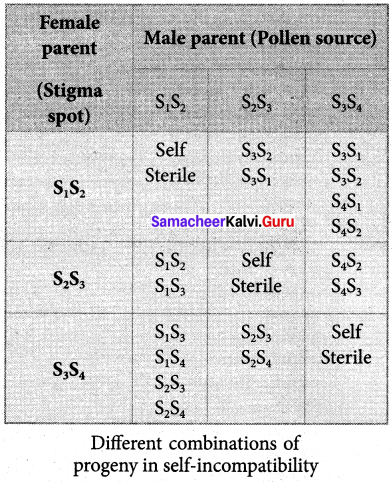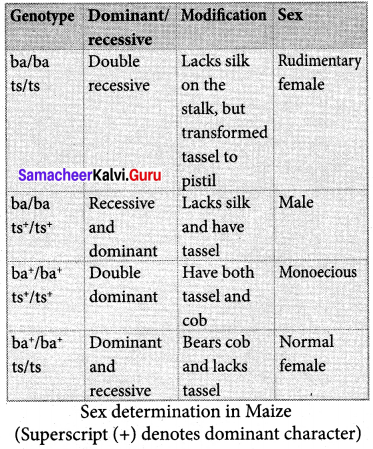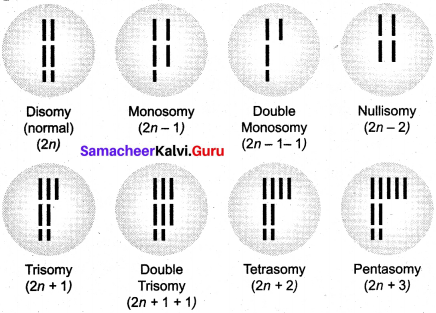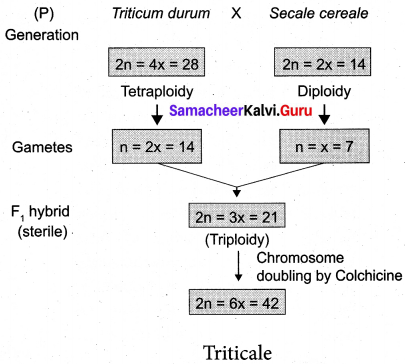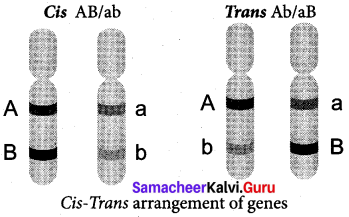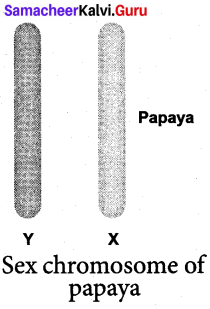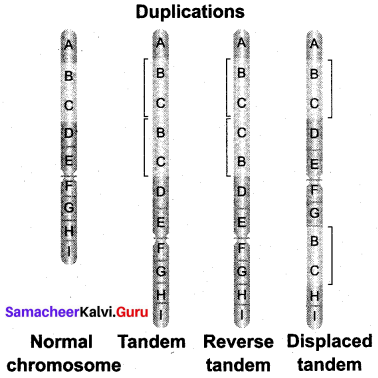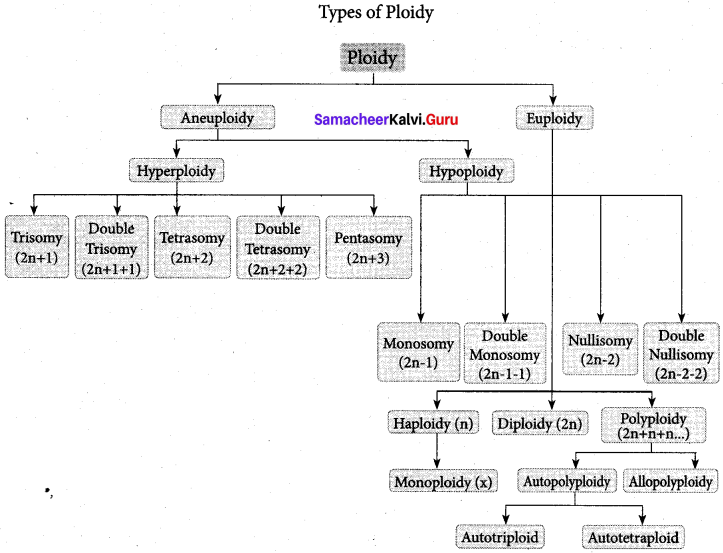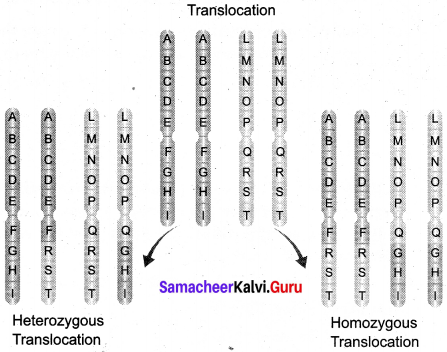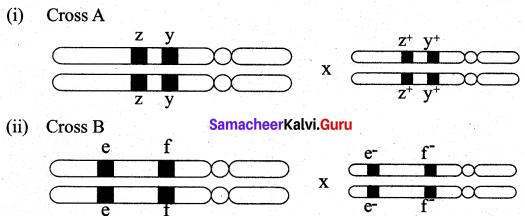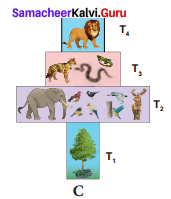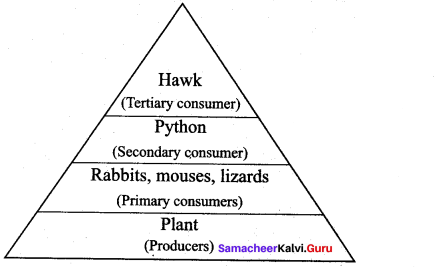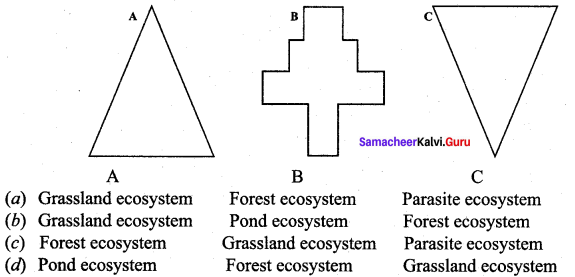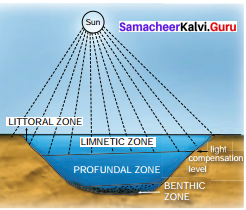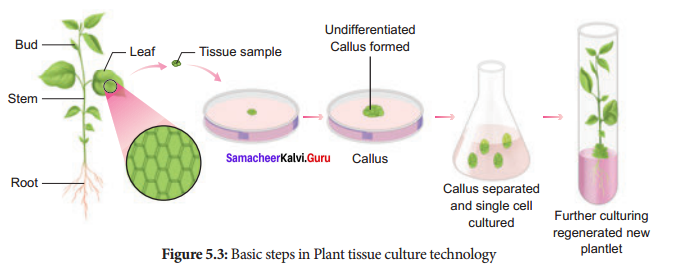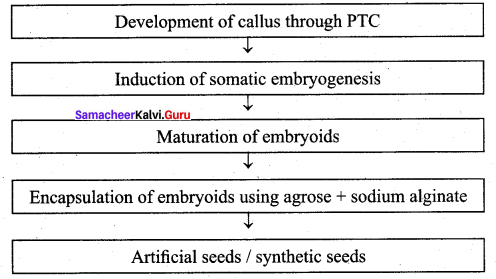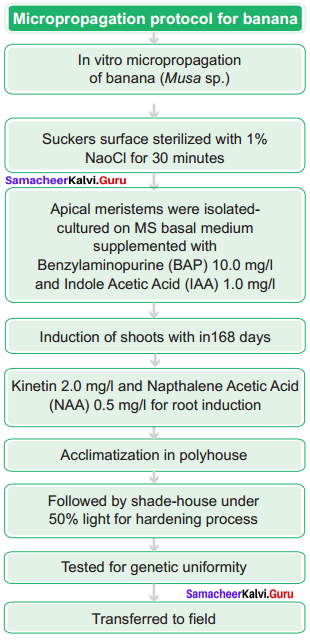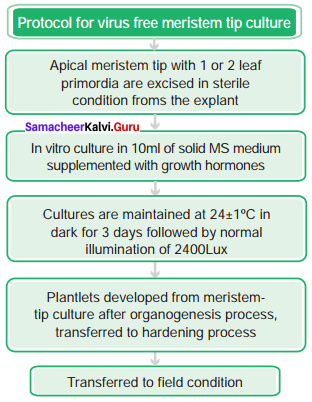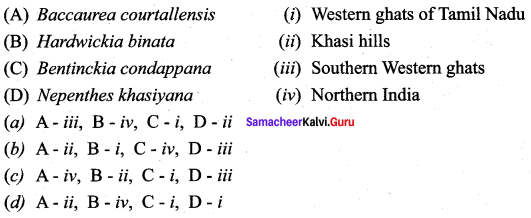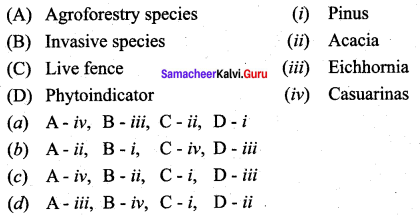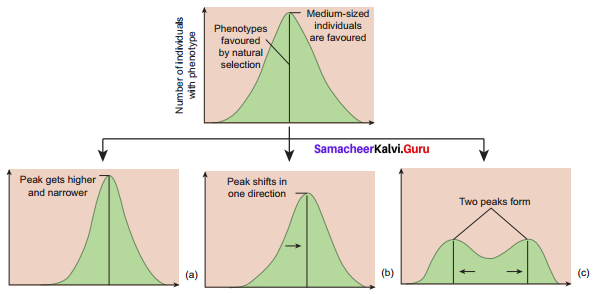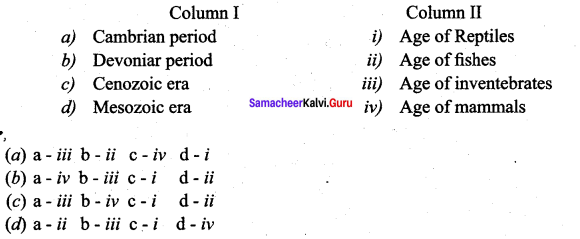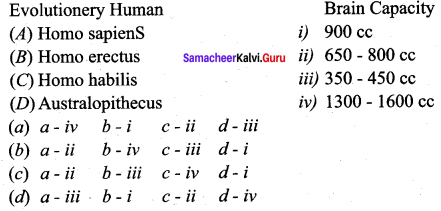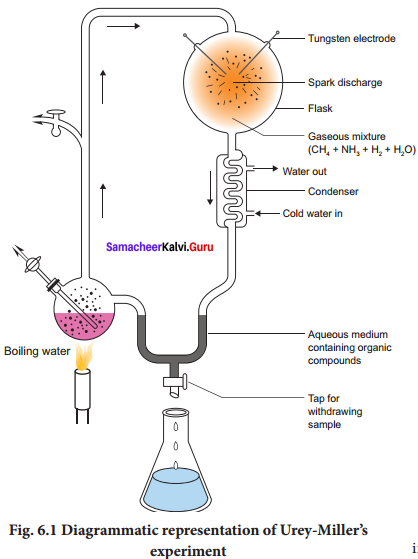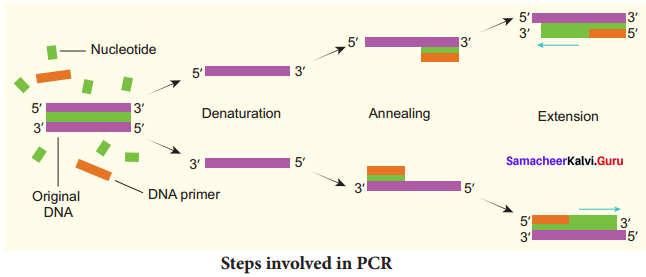If you are looking for the best material to read Bio Botany Chapter 10 Economically Useful Plants and Entrepreneurial Botany Questions and Answers, Notes then Download Samacheer Kalvi 12th Bio Botany Book Solutions Guide Pdf. You can learn all the topics and subtopics by referring to the Tamilnadu State Board 12th Bio Botany Chapter 10 Economically Useful Plants and Entrepreneurial Botany Questions and Answers. Samacheer Kalvi12th Bio Botany Subject Material is the notes that you are looking for. Majority of students love to use Samacheer Kalvi Bio Botany Material while preparing for the exam.
Tamilnadu Samacheer Kalvi 12th Bio Botany Solutions Chapter 10 Economically Useful Plants and Entrepreneurial Botany
Every concept of Tamilnadu State Board 12th Bio Botany Subject PDF is explained clearly in an understandable way. Make sure to answer all the Samacheer Kalvi 12th Questions on your own then look for our explanations to make it more easy. We have included all the topics and subtopics to help students for better learning. Best learning comes when you practice with Samacheer Kalvi Board Solutions for 12th Bio Botany Chapter 10 Economically Useful Plants and Entrepreneurial Botany Questions and Answers.
Samacheer Kalvi 12th Bio Botany Economically Useful Plants and Entrepreneurial Botany Text Book Back Questions and Answers
Question 1.
Consider the following statements and choose the right option:
(i) Cereals are members of grass family.
(ii) Most of the food grains come from monocotyledon.
(a) (i) is correct and (ii) is wrong
(b) Both (i) and (ii) are correct
(c) (i) is wrong and (ii) is correct
(d) Both (i) and (ii) are wrong
Answer:
(b) Both (i) and (ii) are correct
Question 2.
Assertion: Vegetables are important part of healthy eating.
Reason: Vegetables are succulent structures of plants with pleasant aroma and flavours.
(a) Assertion is correct, Reason is wrong
(b) Assertion is wrong, Reason is correct
(c) Both are correct and reason is the correct explanation for assertion.
(d) Both are correct and reason is not the correct explanation for assertion.
Answer:
(d) Both are correct and reason is not the correct explanation for assertion.
Question 3.
Groundnut is native of _____________
(a) Philippines
(b) India
(c) North America
(d) Brazil
Answer:
(d) Brazil
Question 4.
Statement A: Coffee contains caffeine.
Statement B: Drinking coffee enhances cancer.
(a) A is correct, B is wrong
(b) A and B – Both are correct
(c) A is wrong, B is correct
(d) A and B – Both are wrong
Answer:
(a) A is correct, B is wrong
Question 5.
Tectona grandis is coming under family _____________
(a) Lamiaceae
(b) Fabaceae
(c) Dipterocaipaceae
(d) Ebenaceae
Answer:
(a) Lamiaceae
Question 6.
Tamarindus indica is indigenous to _____________
(a) Tropical African region
(b) South India, Sri Lanka
(c) South America, Greece
(d) India alone
Answer:
(a) Tropical African region
Question 7.
New world species of cotton _____________
(a) Gossipium arboretum
(b) G.herbaceum
(c) Both a and b
(d) G.barbadense
Answer:
(d) G.barbadense
Question 8.
Assertion: Turmeric fights various kinds of cancer.
Reason: Curcumin is an anti-oxidant present in turmeric.
(a) Assertion is correct, Reason is wrong
(b) Assertion is wrong, Reason is correct
(c) Both are correct
(d) Both are wrong
Answer:
(c) Both are correct
Question 9.
Find out the correctly matched pair:
(a) Rubber Shorea robusta
(b) Dye
(c) Timber Cyperus papyrus
(d) Pulp Hevea brasiliensis
Answer:
(b) Dye
Question 10.
Observe the following statements and pick out the right option from the following:
Statement I – Perfumes are manufactured from essential oils.
Statement II – Essential oils are formed at different parts of the plants.
(a) Statement I is correct
(b) Statement II is correct
(c) Both statements are correct
(d) Both statements are wrong
Answer:
(c) Both statements are correct
Question 11.
Observe the following statements and pick out the right option from the following:
Statement I: The drug sources of Siddha include plants, animal parts, ores and minerals.
Statement II: Minerals are used for preparing drugs with long shelf-life.
(a) Statement I is correct
(b) Statement II is correct
(c) Both statements are correct
(d) Both statements are wrong
Answer:
(c) Both statements are correct
Question 12.
The active principle trans-tetra hydro canabial is present in _____________
(a) Opium
(b) Curcuma
(c) Marijuana
(d) Andrographis
Answer:
(c) Marijuana
Question 13.
Which one of the following matches is correct?
(a) Palmyra – Native of Brazil
(b) Saccharun – Abundant in Kanyakumari
(c) Steveocide – Natural sweetener
(d) Palmyra sap – Fermented to give ethanol
Answer:
(c) Steveocide – Natural sweetener
Question 14.
The only cereal that has originated and domesticated from the New world.
(a) Oryza sativa
(b) Triticum aestivum
(c) Triticum duram
(d) Zea mays
Answer:
(c) Triticum duram
Question 15.
Write the cosmetic uses of Aloe.
Answer:
Aloe gel are used as skin tonic. It has a cooling effect and moisturizing characteristics and hence used in preparation of creams, lotions, shampoos, shaving creams, after shave lotions and allied products. It is used in gerontological applications for rejuvenation of aging skin. Products prepared from aloe leaves have multiple properties such as emollient, antibacterial, antioxidant, antifungal and antiseptic. Aloe vera gel is used in skin care cosmetics.
Question 16.
What is pseudo cereal? Give an example.
Answer:
The term pseudo-cereal is used to describe foods that are prepared and eaten as a whole grain, but are botanical outliers from grasses. Example: quinoa. It is actually a seed from the Chenopodium quinoa plant, belongs to the family Amaranthaceae.
Question 17.
Discuss which wood is better for making furniture.
Answer:
Teak wood is the ideal type of wood for making household furnitures because, it is highly durable and shows great resistance against the attack of termites and fungi. Moreover it doesnot split or crack and is a carpenter friendly wood.
Question 18.
A person got irritation while applying chemical dye. What would be your suggestion for alternative?
Answer:
If a grey haired person is allergic on using chemical dyes then he can go for natural dyes like Henna. Henna is an organic dye obtained from leaves and young shoots of Lawsonia inermis. The principal colouring matter is Tacosone’ which is harmless and causes no irritation on skin.
Question 19.
Name the humors that are responsible for the health of human beings.
Answer:
Vatam, Pittam and Kapam.
Question 20.
Give definitions for organic farming?
Answer:
Organic farming is an alternative agricultural system in which plants/crops are cultivated – in natural ways by using biological inputs to maintain soil fertility and ecological balance thereby minimizing pollution and wastage.
Question 21.
Which is called as the “King of Bitters”? Mention their medicinal importance.
Answer:
Andrographis paniculata is called as King of Bitters. Andrographis is a potent hepatoprotective agent and is widely used to treat liver disorders. Concoction of Andrographis paniculata and eight other herbs (Nilavembu Kudineer) is effectively used to treat malaria and dengue.
Question 22.
Differentiate bio-medicines and botanical medicines.
Answer:
- Bio-medicines: Medically useful molecules obtained from plants that are marketed as drugs are called Bio-medicines.
- Botanical medicines: Parts of medicinal plants which are modified as powers or pills or other forms and marketed. These are called botanical medicines.
Question 23.
Write the origin and area of cultivation of green gram and red gram.
Answer:

Question 24.
What are millets? What are its types? Give example for each type.
Answer:
Millet is the term applied to a variety of very small seeds originally cultivated by ancient people in Africa and Asia. They are gluten-free with less glycemic index.
Types of millet:
- Major millets – E.g: Ragi (Eleusine coracana)
- Minor millets – E.g: Foxtail millet (Setaria italica)
Question 25.
If a person drinks a cup of coffee daily it will help him for his health. Is this correct? If it is correct, list out the benefits.
Answer:
Yes, drinking coffee in moderation enhances the health of a person. Caffeine enhances release of acetylcholine in brain, which in turn enhances efficiency. It can lower the incidence of fatty liver diseases, cirrhosis and cancer. It may reduce the risk of type 2 diabetes.
Question 26.
Enumerate the uses of turmeric.
Answer:
Turmeric is one of the most important and ancient Indian spices and used traditionally over thousands of years for culinary, cosmetic, dyeing and for medicinal purposes. It is an important constituent of curry powders. Turmeric is used as a colouring agent in pharmacy, confectionery and food industry. Rice coloured with turmeric (yellow) is considered sacred and auspicious which is used in ceremonies. It is also used for dyeing leather, fibre, paper and toys.
Curcumin extracted from turmeric is responsible for the yellow colour. Curcumin is a very good anti-oxidant which may help fight various kinds of cancer. It has anti-inflammatory, anti- ‘ diabetic, anti-bacterial, anti-fungal and anti-viral activities. It stops platelets from clotting in arteries, which leads to heart attack.
Question 27.
What is TSM? How does it classified and what does it focuses on?
Answer:
TSM stands for Traditional Systems of Medicines India has a rich medicinal heritage. Anumber of Traditional Systems of Medicine (TSM) are practiced in India some of which come from outside India. TSM in India can be broadly classified into institutionalized or documented and non-institutionalized or oral traditions. Institutionalized Indian systems include Siddha and Ayurveda which are practiced for about two thousand years.
These systems have prescribed texts in which the symptoms, disease diagnosis, drugs to cure, preparation of drugs, dosage and diet regimes, daily and seasonal regimens. Non-institutional systems, whereas, do not have such records and or practiced by rural and tribal peoples across India. The knowledge is mostly held in oral form. The TSM focus on healthy lifestyle and healthy diet for maintaining good health and disease reversal.
Question 28.
Write the uses of nuts you have studied.
Answer:
Cashews are commonly used for garnishing sweets or curries, or ground into a paste that forms a base of sauces for curries or some sweets. Roasted and raw kernels are used as snacks.
Question 29.
Give an account on the role of Jasminum in perfuming.
Answer:
The essential jasmine oil is present in the epidermal cells of the inner and outer surfaces of both the sepals and petals. One ton of Jasmine blossom yields about 2.5 to 3 kg of essential oil, comprising 0.25 to 3% of the weight of the fresh flower. Jasmine oil is an essential oil that is valued for its soothing, relaxing and antidepressant qualities.
Question 30.
Give an account of active principle and medicinal values of any two plants you have studied
Answer:

Question 31.
Write the economic importance of rice.
Answer:
Rice is the easily digestible calorie rich cereal food which is used as a staple food in Southern and North East India. Various rice products such as Flaked rice (Aval), Puffed rice / parched rice (Pori) are used as breakfast cereal or as snack food in different parts of India. Rice bran oil obtained from the rice bran is used in culinary and industrial purposes. Husks are used as fuel, and in the manufacture of packing material and fertilizer.
Question 32.
Which TSM is widely practiced and culturally accepted in Tamil Nadu? – explain.
Answer:
Siddha is the most popular, widely practiced and culturally accepted system in Tamil Nadu. It is based on the texts written by 18 Siddhars. There are different opinions on the constitution of 18 Siddhars. The Siddhars are not only from Tamil Nadu, but have also come from other countries. The entire knowledge is documented in the form of poems in Tamil. Siddha is principally based on the Pancabuta philosophy. According to this system three humors namely Vatam, Pittam and Kapam that are responsible for the health of human beings and ‘ any disturbance in the equilibrium of these humors result in ill health.
The drug sources of Siddha include plants, animal parts, marine products and minerals. This system specializes in using minerals for preparing drugs with the long shelf-life. This system uses about 800 herbs as source of drugs. Great stress is laid on disease prevention, health promotion, rejuvenation and cure.
Question 33.
What are psychoactive drugs? Add a note Marijuana and Opium.
Answer:
Phytochemicals or drugs from some of the plants alter an individuals perceptions of mind by producing hallucination are known as psychoactive drugs.
- Marijuana: Marijuana is obtained from Cannabis sativa. The active principle in Marijuana is trans – tetrahydrocanabinal (TCH). It is used as pain killer and reduce hypertension. It is also used in the treatment of Glaucoma, cancer radiotherapy and asthma, etc.
- Opium: Opium is obtained from the exudates of the fruits of papaver somniferum (poppy plants). It is used to induce sleep and relieve pain. Opium yields morphine which is used as a strong analgesic in surgeries.
Question 34.
What are the King and Queen of spices? Explain about them and their uses.
Answer:
- King of Spices: Pepper is one of the most important Indian spices referred to as the “King of Spices” and also termed as “Black Gold of India”. Kerala, Karnataka and Tamil Nadu are the top producers in India. The characteristic pungency of the pepper is due to the presence of alkaloid Pipeline. There are two types of pepper available in the market namely black and white pepper.
- Uses: It is used for flavouring in the preparation of sauces, soups, curry powder and pickles. It is used in medicine as an aromatic stimulant for enhancing salivary and gastric secretions and also as a stomachic. Pepper also enhances the bio-absorption of medicines.
- Queen of Spices: Cardamom is called as “Queen of Spices”. In India, it is one of the main cash crops cultivated in the Western Ghats, and North Eastern India.
- Uses: The seeds have a pleasing aroma and a characteristic warm, slightly pungent taste. It is used for flavouring confectionaries, bakery products and beverages. The seeds are used in the preparation of curry powder, pickles and cakes. Medicinally, it is employed as a stimulant and carminative. It is also chewed as a mouth freshener.
Question 35.
How will you prepare an organic pesticide for your home garden with the vegetables available from your kitchen?
Answer:
Step 1: Mix 120 g of hot chillies with 110 g of garlic or onion. Chop them thoroughly.
Step 2: Blend the vegetables together manually or using an electric grinder until it forms a thick paste.
Step 3: Add the vegetable paste to 500 ml of warm water. Give the ingredients a stir to thoroughly mix them together.
Step 4: Pour the solution into a glass container and leave it undisturbed for 24 hours. If possible, keep the container in a sunny location. If not, at least keep the mixture in a warm place.
Step 5: Strain the mixture. Pom- the solution through a strainer, remove the vegetables and collect the vegetable-infused water and pour into another container. This filtrate is the pesticide. Either discard the vegetables or use it as a compost.
Step 6: Pour the pesticide into a squirt bottle. Make sure that the spray bottle has first been cleaned with warm water and soap to get rid it of any potential contaminants. Use a funnel to transfer the liquid into the squirt bottle and replace the nozzle.
Step 7: Spray your plants with the pesticide. Treat the infected plants every 4 to 5 days with the solution. After 3 or 4 treatments, the pest will be eliminated. If the area is thoroughly covered with the solution, this pesticide should keep bugs away for the rest of the season.
Samacheer Kalvi 12th Bio Botany Economically Useful Plants and Entrepreneurial Botany Additional Questions and Answers
1 – Mark Questions
Question 1.
Paddy, Wheat and Sorghum, etc., comes under the category of cereals. All the members of cereals belong to which of the following family?
(a) Fabaceae
(b) Poaceae
(c) Leguminoneae
(d) Caesalpinaeceae
Answer:
(b) Poaceae
Question 2.
Match the common names of the given plant species with their respective binomials

Answer:
(a) A – iii, B – iv, C – iv, C – ii and D – i
Question 3.
Given below are the plant species and their parts used. Which is the incorrect pair(s)?
(i) Cajanus cajan : Seeds
(ii) Anacardium occidentale : nuts
(iii) Borassus flabellifer : Endosperm
(iv) Capsicum annum : leaves
(a) i and ii
(b) ii and iii
(c) iii only
(d) iv only
Answer:
(d) iv only
Question 4.
Identify the tamil name for flaked rice
(a) Nel
(b) Aval
(c) Pori
(d) Umi
Answer:
(b) Aval
Question 5.
Pigeon pea is the common name for.
(a) Vigna radiata
(b) Vigna mungo
(c) Cajanus cajan
(d) Sorghum vulgare
Answer:
(c) Cajanus cajan
Question 6.
Sorghum is native to ______ continent.
Answer:
Africa
Question 7.
Match the following:
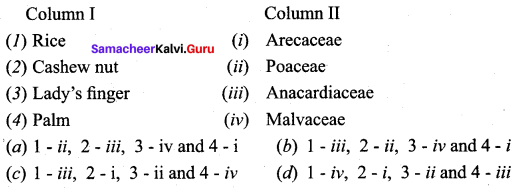
Answer:
(a) 1 – ii, 2 – iii, 3 – iv and 4 – i
Question 8.
_____ is the state tree of Tamil Nadu.
Answer:
Palmyra
Question 9.
Statement 1: Arachis hypogea belongs to Fabaceae Statement 2: It is a native of Brazil.
(a) Statement 1 is correct and Statement 2 is also correct
(b) Statement 1 is correct and Statement 2 is incorrect
(c) Statement 1 is incorrect and Statement 2 is correct
(d) Both the Statements are incorrect
Answer:
(a) Statement 1 is correct and Statement 2 is also correct
Question 10.
Statement 1: Chinese discovered the paper.
Statement 2: Eucalyptus and Casuarina are the widely used tree species for making paper pulp.
(a) Statement 1 is correct and Statement 2 is also correct
(b) Statement 1 is correct and Statement 2 is incorrect
(c) Statement 1 is incorrect and Statement 2 is correct
(d) Both the Statements are incorrect
Answer:
(a) Statement 1 is correct and Statement 2 is also correct
Question 11.
Statement 1: Andrographis paniculata is known as King of Bitters.
Statement 2: The decoction of Andrographis is used against Diabetes mellitus.
(a) Statement 1 is correct and Statement 2 is also correct
(b) Statement 1 is correct and Statement 2 is incorrect
(c) Statement 1 is incorrect and Statement 2 is correct
(d) Both the Statements are incorrect
Answer:
(b) Statement 1 is correct and Statement 2 is incorrect
Question 12.
Statement 1: Aloe vera belongs to the family Asphodelaceae.
Statement 2: Jasminum grandiflorum belongs to the family of Oleaceae.
(a) Statement 1 is correct and Statement 2 is also correct
(b) Statement 1 is correct and Statement 2 is incorrect
(c) Statement 1 is incorrect and Statement 2 is correct
(d) Both the Statements are incorrect
Answer:
(a) Statement 1 is correct and Statement 2 is also correct
Question 13.
Which district of Tamil Nadu is the World’s largest wholesale turmeric dealer?
Answer:
Erode
Question 14.
Assertion (A): Turmeric is used to treat cancer.
Reason (R): Curcumin is biomolecule present in turmeric.
(a) A is right R is wrong
(b) Both A and R are wrong
(c) A is wrong R is right
(d) A and R are right. R explains A.
Answer:
(d) A and R are right. R explains A.
Question 15.
Assertion (A): Black pepper is a spice.
Reason (R): Condiments are flavouring substances, generally added after the cooking of food.
(a) A is right R is wrong
(b) R explains A
(c) Both A and R are right. R is not correct explanation for A.
(d) Both A and R are wrong
Answer:
(c) Both A and R are right. R is not correct explanation for A.
Question 16.
Select the new world species of cotton.
(i) Gossypium hirsutum
(ii) Gossypium arboreum
(iii) Gossypium arboreum
(iv) Gossipium
(a) i and ii only
(b) i and iii only
(c) iii and iv only
(d) ii and iv only
Answer:
(a) i and ii only
Question 17.
Binomial of teak is ________
Answer:
Tectona grandis
Question 18.
The plant source of Marijuana is ________
(a) Andrographis paniculata
(b) Phyllanthus maderspatensis
(c) Cannabis sativa
(d) Papaver somniferum
Answer:
(c) Cannabis sativa
Question 19.
Identify the incorrect statements:
(a) Morphine is used as potent hepatoprotective.
(b) Phyllanthin is used as a strong analgesic in surgery.
(c) Indian Acalypha is used to cure skin diseases.
(d) Cissus quadrangularis is widely used for treating bone fractures.
(i) a and c
(ii) a and d
(iii) b and c
(iv) a and b
Answer:
(iv) a and b
Question 20.
Identify the mismatched pair:
(a) Holy basil – Ocimum sanctum
(b) Indian gooseberry – Phyllanthus amarus
(c) Vilvam – Aegle marmelos
(d) Veldt grape – Cissus quadrangularis
Answer:
(b) Indian gooseberry – Phyllanthus amarus
Question 21.
The active principle in Marijuana is _________
Answer:
Trans-tetrahydrocanabinal (THC).
Question 22.
The second GI tag for Jasmine is ‘Madurai Malli’, which jasmine type has got the first GI tag?
Answer:
‘Mysore Malli’
Question 23.
The principal coloring agent present in the leaf paste of Lawsonia inermis which give orange to dark red when applied on skin is _______
Answer:
Lacosone
Question 24.
Which state of India ranks first in coffee consumption?
Answer:
Tamil Nadu
Question 25.
Name the plant family to which the coffee plant belongs to?
Answer:
Rubiaceae
2 – Mark Questions
Question 1.
Give the binomials of paddy and wheat.
Answer:
- Paddy : Oryza sativa.
- Wheat: Triticum aestivum.
Question 2.
What is maida? Mention its culinary purpose.
Answer:
Processed wheat flour, that has little fibre, is called Maida which is used extensively in making parota, naan and bakery products.
Question 3.
Name any four millet varieties.
Answer:
Finger millet, Sorghum, Foxtail millet and Kodo millet.
Question 4.
Ragi rich food helps to overcome bone related ailments – justify.
Answer:
Ragi (Finger millet) is a kind of millet which has less glycemic index and rich in calcium. Hence consuming ragi food items enhances the bone strength.
Question 5.
Eating millets is good for diabetic patients. How?
Answer:
Millets are gluten free and have less glycemic index, hence it is good for diabetic patients.
Question 6.
Write the health benefits of Kodo millet.
Answer:
Kodo millet is a good diuretic and cures constipation. Helps to reduce obesity, blood sugar and blood pressure.
Question 7.
Name the family does the cereals and pulses belong to.
Answer:
- Cereals belong to the family Poaceae.
- Pulses belong to the family Fabaceae.
Question 8.
Write the common name for
- Vigna radiata
- Cajanus cajatt
Answer:
- Vigna radiata – Green gram.
- Cajanus cajan – Red gram or pigeon pea.
Question 9.
Why do we take vegetables in our diet?
Answer:
Vegetables are the important part of healthy eating and provide many nutrients, including potassium, fiber, folic acid and vitamins A, E and C. The nutrients in vegetables are vital for maintenance of our health.
Question 10.
Write the binomial and the family to which lady’s finger belongs to.
Answer:
Binomial of lady’s finger is Abelmoschus esculentus.
Family: Malvaceae.
Question 11.
Which is our National fruit and State tree of Tamil Nadu?
Answer:
- National fruit of India is Mango.
- State tree of Tamil Nadu is Palmyra.
Question 12.
Point out the uses of sugarcane.
Answer:
Sugar cane is the raw material for extracting white sugar. Sugarcane supports large number of industries like sugar mills producing refined sugars, distilleries producing liquor grade ethanol and millions of jaggery manufacturing units. Fresh sugarcane juice is a refreshing drink. Molasses is the raw material for the production of ethyl alcohol.
Question 13.
What is toddy?
Answer:
Inflorescence of palmyra is tapped for its sap which is used as health drink. Sap is processed to get palm jaggery or fermented to give toddy.
Question 14.
How coffee plants are introduced to India?
Answer:
Coffea arabica is the prime source of commercial coffee which is native to the tropical Ethiopia. An Indian Muslim saint, Baba Budan introduced coffee from Yemen to Mysore.
Question 15.
Compare Spices and Condiments.
Answer:
Spices are accessory foods mainly used for flavouring during food preparation to improve , their palatability. Spices are aromatic plant products and are characterized by sweet or bitter taste. Spices are added in minimal quantities during the cooking process. For example black pepper. Condiments, on the other hand, are flavouring substances having a sharp taste and are usually added to food after cooking. For example, curry leaves.
Question 16.
Mention any two Jute species.
Answer:
- Corchorus capsularis
- Corchorus olitorius
Question 17.
Name the plant species used for making paper pulp.
Answer:
Wood of Melia azadirachta, Neolamarkia chinensis, Casuarina spp and Eucalyptus spp are used for making paper pulp.
Question 18.
What does NCB stands for? Mention its role.
Answer:
The Narcotics Control Bureau (NCB) is the nodal drug law enforcement and intelligence agency of India and is responsible for fighting drug trafficking and the abuse of illegal substances.
3 – Mark Questions
Question 19.
Write a short note on foxtail millet. Foxtail Millet
Answer:
- Botanical name: Setaria italica This is one of the oldest millet used traditionally in India. Which is domesticated first in China about 6000 years. Rich in protein, carbohydrate, vitamin B and C, Potassium and Calcium.
- Uses:It supports in strengthening of heart and improves eye sight. Thinai porridge is given to lactating mother.
Question 20.
Write the botanical name and culinary uses of green gram.
Answer:
Botanical name: Vigna radiata Uses It can be used as roasted, cooked and sprouted pulse. Green gram is one of the ingredients of pongal, a popular breakfast dish in Tamil Nadu. Fried dehulled and broken or whole green gram is used as popular snack. The flour is traditionally used as a cosmetic, especially for the skin.
Question 21.
Mention the ways in which mangoes are used in Indian culinary.
Answer:
Mango is the major table fruit of India, which is rich in beta carotenes. It is utilized in many ways, as dessert, canned, dried and preserves in Indian cuisine. Sour, unripe mangoes are used in chutneys, pickles, side dishes, or may be eaten raw with salt and chili. Mango pulp is made into jelly. Aerated and non-aerated fruit juice is a popular soft drink.
Question 22.
Write a note on origin and area of cultivation of cotton.
Answer:
Cotton is one of the oldest cultivated crops of the world. It has been cultivated for about 8000 years both in new world and in old world. Commercial cotton comes from four cotton species: two from the new world and two from the old world.
- Gossypium hirsutum
- G.barbadense are the New world species and
- G. arboretum
- G. herbaceum are the old world species. In India, cotton is cultivated in Gujarat, Maharashtra, Andhra Pradesh and Tamil Nadu.
Question 23.
What is vulcanization? Who invented it?
Answer:
The heating of the rubber with sulphur under pressure at 150°C is called vulcanization. It was invented by Charles Goodyear.
Question 24.
Write a note on Henna.
Answer:
- Botanical name: Lawsonia inermis.
- Family: Lythraceae.
- Origin and Area of cultivation: It is indigenous to North Africa and South-west Asia. It is grown mostly throughout India, especially in Gujarat, Madhya Pradesh and Rajasthan.
- Uses: An orange dye ‘Henna’ is obtained from the leaves and young shoots of Lawsonia inermis. The principal colouring matter of leaves Tacosone” is harmless and causes no irritation to the skin. This dye has long been used to dye skin, hair and finger nails. It is used for. colouring leather, for the tails of horses and in hair-dyes.
Question 25.
What are organic pesticides?
Answer:
Pest like aphids, spider and mites can cause serious damage to flowers, fruits, and vegetables. These creatures attack the garden in swarms, and drain the life of the crop and often invite disease in the process. Many chemical pesticides prove unsafe for human and the environment. It turns fruits and vegetables unsafe for consumption. Thankfully, there are many homemade, organic options to turn to war against pests.
5 – Mark Questions
Question 26.
Write the botanical name, origin, cultivational area and uses of Black gram.
Answer:
- Botanical name : Vigna mungo
- Origin and Area of cultivation : Black gram is native to India. Earliest archeobotanical evidences record the presence of black gram about 3,500 years ago. It is cultivated as a rain fed crop in drier parts of India. India contributes to 80% of the global production of black gram. Important states growing black gram in India are Uttar Pradesh, Chattisgarh and Karnataka.
- Uses : Black gram is eaten whole or split, boiled or roasted or ground into fl our. Black gram batter is a major ingredients for the preparation of popular Southern Indian breakfast dishes. Split pulse is used in seasoning Indian curries.
Question 27.
Give a detailed account on any one fibe yielding plant. Jute
Answer:
- Botanical name : Corchorus app.
- Family: Malvaceae
- Origin and Area of cultivation: Jute is derived from the two cultivated species Corchorus capsularis Colittorius is of African origin whereas C. Capsularis, is believed to Indo- Burmaese origin. It is an important cultivated commercial crop in Gangetic plains of India and Bangladesh.
- Use : It is one of the largest exported fibre material of India. The jute industry occupies an important place in the national economy of India. Jute is used for ‘safe’ packaging in view of being natural, renewable, bio-degradable and eco-friendly product. It is used in bagging and wrapping textile. About 75% of the jute produced is used for manufacturing sacks and bags. It is also used in manufacture of blankets, rags, curtains etc. It is also being used as a textile fibre in recent years.
Question 28.
Draw a table mentioning binominals, family name, useful part and their medical uses of any five local medicinal plants.
Answer:
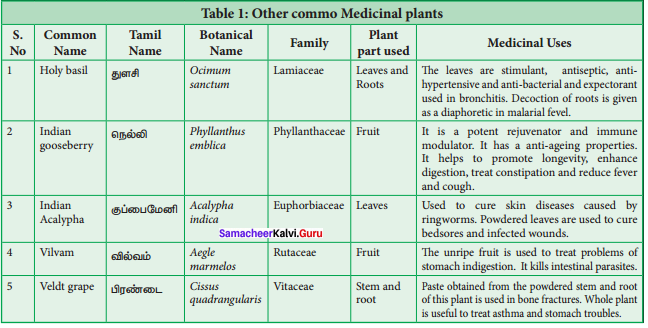
Question 29.
Explain the stepwise preparation of Bio-pest repellent from the leaves of Azadirachta indica
Answer:
Botanical pest repellent and insecticide made with the dried leaves of Azadirachta indica
Preparation of Bio-pest repellent
- Pluck leaves from the neem tree and chop the leaves finely.
- The chopped up leaves were put in a 50-liter container and fill to half with water; put the lid on and leave it for 3 days to brew.
- Using another container, strain the mixture which has brewed for 3 days to remove the leaves, through fine mesh sieve. The filtrate can be sprayed on the plants to repel pests.
- To make sure that the pest repellent sticks to the plants, add 100 ml of cooking oil and the same amount of soap water. (The role of the soap water is to break down the oil, and the role of the oil is to make it stick to the leaves).
- The stewed leaves from the mixture can be used in the compost heap or around the base of the plants.
Higher Order Thinking Skills (HOTs) Questions
Question 1.
The following are the binomials of economically useful plants. Mention their respective families.
(a) Borassus flabellifer
(b) Mangifera indica
(c) Saccharum officinarum
(d) Curcuma longa
(e) Capsicum annum
(f) Tamarindus indica
Answer:
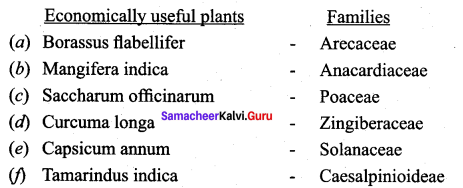
Question 2.
Name the plant source from which the following products are obtained.
- Maida
- Rubber
- Morphine
- Coffee
Answer:
- Maida – Triticum durum
- Rubber – Hevea brasiliensis
- Morphine – Papaver somniferum
- Coffee – Coffea arabica
Question 3.
Mention the plant species or their products which are popularly known as
- Queen of species
- Black Gold of India and
- King of bitters.
Answer:
- Queen of Species – Cardamom
- Black Gold of India – Pepper
- King of bitters – Andrographis paniculata
Question 4.
Complete the statements.
- Alphonsa is a variety of ______
- Cayenne pepper is a variety of ______
Answer:
- Mango
- Capsicum
Question 5.
Siddha medicine is an age old practice in our nation. According to this medicinal system, what is the major cause for all sort of illness in humans?
Answer:
According to Siddha medicine, three humors namely vatam, pittam and kapam are responsible for the health of human being and any disturbance in the equilibrium of these humors result in ill health.
Hope you love the Samacheer Kalvi 12th Chapter Wise Material. Clearly understand the deep concept of Bio Botany learning with the help of Samacheer Kalvi 12th Chapter 10 Economically Useful Plants and Entrepreneurial Botany Questions and Answers PDF. Refer your friends to and bookmark our website for instant updates. Also, keep in touch with us using the comment section.
